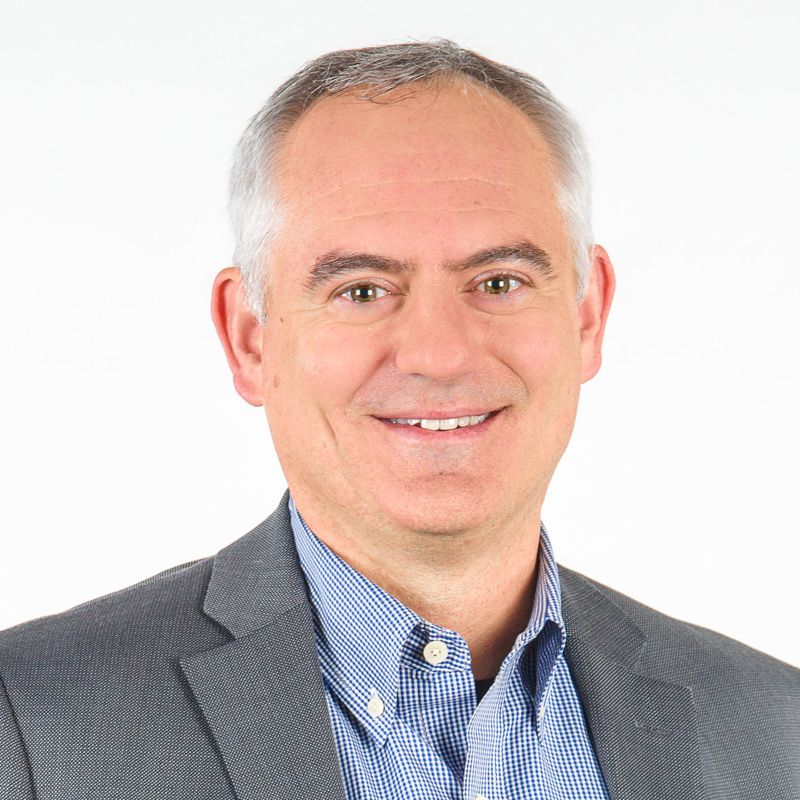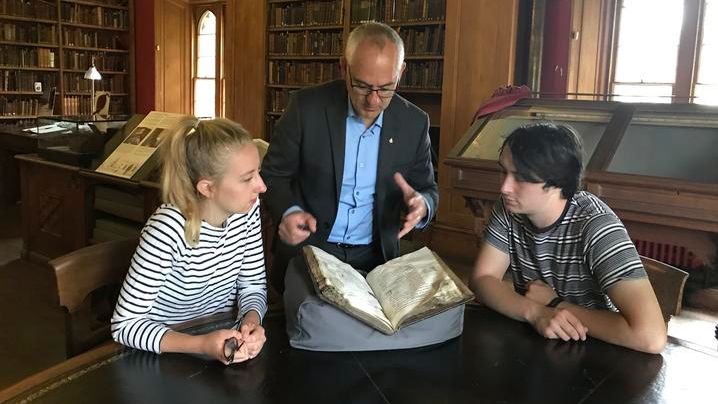LEXINGTON, Ky. — A $14 million infrastructure grant from the National Science Foundation to the University of Kentucky will allow researchers to use artificial intelligence to unlock information stored in ancient artifacts.
What You Need To Know
- Project should be complete in five years
- Artificial intelligence aids in "virtual unwrapping"
- EduceLab will be located in William S. Webb Museum of Anthropology
- Heritage science is researching tangible objects
Dr. Brent Seales is an alumni professor in UK’s department of computer science. He is known as “the man who can read the unreadable” and has garnered international recognition for his “virtual unwrapping” of ancient artifacts, notably the Dead Sea Scrolls and Herculaneum papyrus scrolls.
“I have a long history with cultural heritage right here at UK that led me ultimately to the scrollwork that I did virtual unwrapping,” Seales said. “I have a foundation in heritage science. A few years ago, I spent my sabbatical at the Getty, out on the West Coast in Los Angeles. That experience really opened my eyes to sort of the wide spectrum of artifacts and institutions that could participate in heritage science right here in Kentucky. Of course, the Getty is far away, so all the equipment they have to be able to do their work really can't play a role for folks here in our region. So we started thinking, ‘Why don't we build some of that equipment here so that we can bring science to heritage?’ And that's where the lab comes in.”
Seales has assembled a team of experts from the UK engineering and arts and sciences colleges to build EduceLab, a facility focused on developing innovative artificial intelligence solutions to get information from cultural heritage objects, commonly known as heritage science.

“The National Science Foundation (NSF) program was targeted for infrastructure, and this is an infrastructure-rich area because to do the science, you really have to have the equipment to do the analysis — what is this thing made of? How do I see inside this thing? — questions like that,” Seales said. “We went after the grant, which was a high-dollar, low-probability kind of effort. We made the case because we're in a part of the country where there isn't much available if you want to do heritage science, and the researchers here are first-rate. NSF paid attention, and we got the money.”
UK becoming a destination in the region for heritage science research is one aspect of creating EduceLab, but taking the technology on the road is also a possibility.
“We do have a mobile unit that we will be able to drive and be deployed probably anywhere within a day or two drive,” Seales said. “Central Kentucky is a day's drive from a third of the population in the US, so that's pretty good coverage. There's going to be a lot of work in those areas we might be able to get.”
The overall EduceLab plan is expected to take five years, with full commissioning happening in the fifth year, but some prototype projects could occur late in the second, or early in the third year.
“We have great collaborative relationships with Mammoth Cave. They were in our proposal from the very beginning,” Seales said. “Mammoth Cave is an incredibly rich heritage site with a long history of uses that vary from convalescing sick people down in the cave to modern exploration in archaeology. We have a ton of project ideas where we'll be working with them. Another place is Camp Nelson, right here in UK’s backyard, because that Civil War site also has a deep and rich heritage that includes a lot of artifacts that I think will be really interesting for us to explore.”
Seales said much of his team’s research would be on “tangible heritage science” because it works on actual objects, geography, buildings or archaeological sites. His team will give its data to other scientists who are interested in “intangible heritage.”
“A lot of what we'll do is sort of a support role to improve the ability of the intangible scientists and humanities scholars to do their work, but there will be things that we can visualize as we collect data and data that will be added,” Seales said. “We will release that as we move forward.”
EduceLab will occupy space in the William S. Webb Museum on Export Street in Lexington near UK’s campus, which Seales said is an ideal location.
The Webb museum contains a lot of artifacts that were excavated when the Tennessee Valley Authority put in the waterways and the dams,” he said. “William Webb and William Funkhouser were top-level professors at the University of Kentucky in the 1920s and 1930s. They collected soil samples, for example, as they excavated, and those soil samples are like going back in time — one from 5,000 years ago and one from 3,000 years ago — so imagine just doing the chemical analysis on those samples to understand maybe something about the environment that we have no other way to get. Because we have this collection, we can do that work. That's the kind of thing that I think we're going to enable, and the creativity, I think, will probably surprise all of us.”
The ability to assemble the new equipment and apply it to cultural questions is one thing Seales finds exciting about the project.
“The science underneath is an important part of what we're doing. It's tangible heritage science,” he said. “We're actually doing real data collection on real objects, and the science we will be using, such as scanning electron microscopes and X-ray fluorescence and computed X-ray tomography, are high-level things that have only become available for researchers, like me, in the past several years. Being able to assemble that equipment and apply it to these cultural questions is really exciting.



